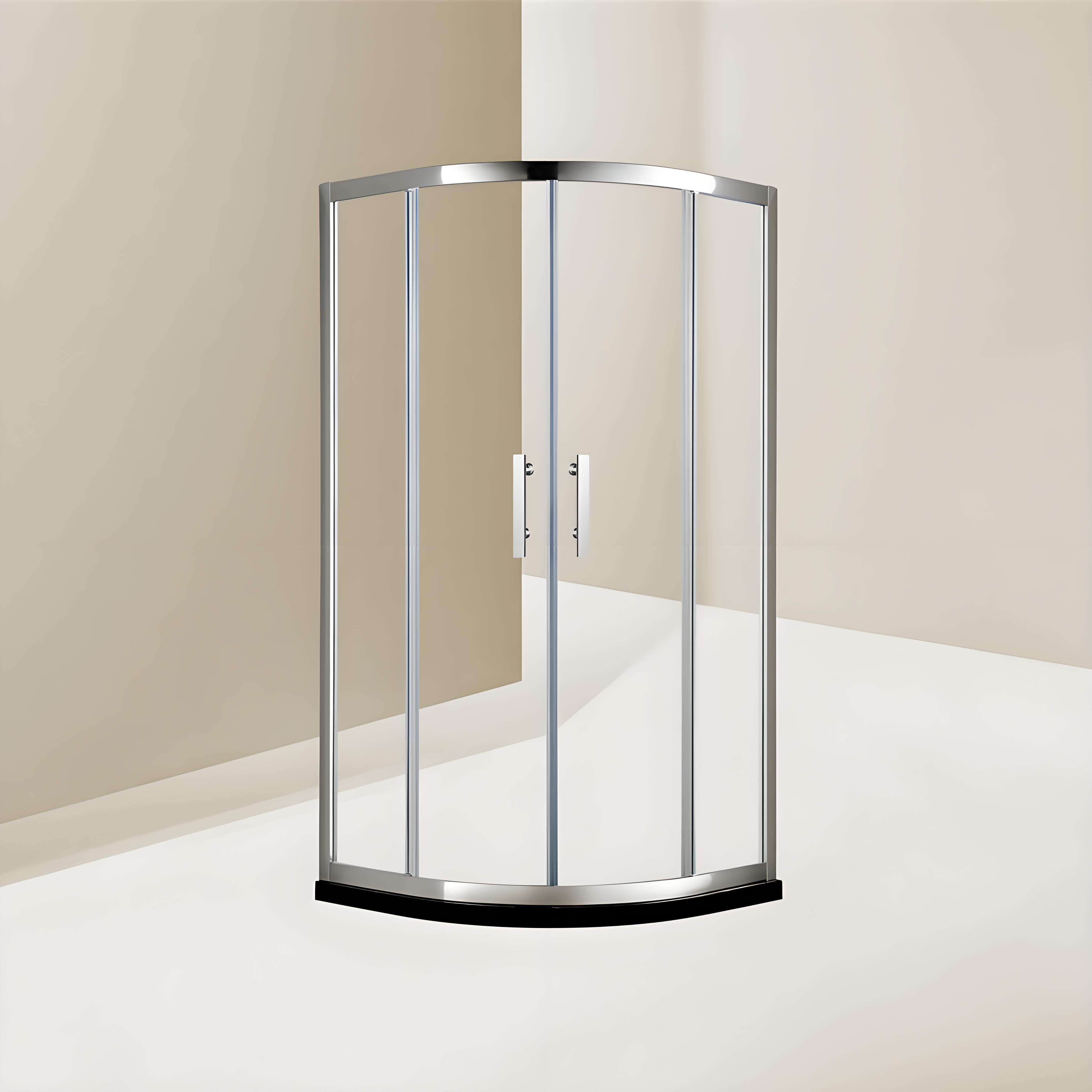הכרת תכונות הבטחה מתקדמות בדלתות זכוכית
במגמה לשדרוג המראה האסתטי של הבית תוך שמירה על אבטחה, בית הפכו לפופולריות בהרבה בתים. עם זאת, רבים מהורים עם ילדים וחיות מחמד שואלים את עצמם באופן טבעי עד כמה דלתות זכוכית בטוחות. דלתות זכוכית מודרניות כוללות תכונות בטחה מתקדמות והנדסה שמדגישה את הבטחה באופן ניכר לעומת הדור הקודם, ומציעות גם יופי וגם הגנה לכל בני המשפחה. דלתות זכוכית דלתות זכוכית
טכנולוגיות בטחה חיוניות בדלתות זכוכית
חדשנות זכוכית טמפרטורית
מודרני דלתות זכוכית השתמשו בזجاج טמפרטורי, שעובר תהליכי חום וקירור מיוחדים שיוצרים זجاج חזק פי ארבעה מזجاج רגיל. כאשר הוא נשבר, הוא נשבר לחתיכות קטנות ומעוגלות ולא לרסיסים חדים ומסוכנים, וכך מפחית משמעותית את סיכוני הפציעה. לכן, דלתות מזجاج טמפרטורי הן מתאימות במיוחד לבתים עם ילדים פעילים וחיות מחמד.
פתרונות זجاج מקשה
הזجاج המקשה מוסיף עוד שכבת ביטחון על ידי שכבת פלסטיק עמידה הנמצאת בין שני דפי זجاج. גם אם הזجاج נשבר, הוא נשאר מחובר זה לזה בעזרת השכבה הזו, וכך מונע מהרסיסים המסוכנים להתפזר. הטכנולוגיה הזו מועילה במיוחד באזורים בהם משחקים ילדים וחיות מחמד, שכן היא שומרת על שלמות מבנית גם תחת מ удар חזק.
פיתוחים בתיבת הדלת ובחומרים
מסגרות דלתות זכוכית מודרניות מצוידות בחומרים מחוזקים ומנועלי ביטחון מתקדמים שמשפרים את הבטחה הכללית. המסגרות נועדו לעמוד בכוח רב בעודן מונעות מהתחבשות אצבעות - שיקול חשוב ביחס לילדים סקרנים וחיות מחמד שיחניות. בנוסף, חומרה מודרנית כוללת מנגנוני סגירה רכה שמנטרלים את הסיכון לדלתות הנעלו בפתע על אצבעות או על פרסות.

שיקולים ביטחוניים ספציפיים לילדים
מאפייני שיפור ראות
כדי למנוע תאונות, כוללות דלתות זכוכית רבות כיום אלמנטים דקורטיביים או דוגמאות מעומעמות שעושות את הזכוכית נראית יותר לילדים. תכונות העיצוב האלה ניתנות להתאמה אישית כדי להשלים את עיצוב הבית בזמן שהן משמשות סימני זהות מראים שמעדיפיםונת התנגשויות. בנוסף, מציעים יצרנים גם מצעים מיוחדים שמפחיתים את הבהירות ומשפרים את הראות בתנאי תאורה משתנים.
תקני התנגדות להשפעת מכאני
דלתות זכוכית מודרניות חייבות לעמוד בסטנדרטים אופטימליים של ביטחון נגד מכה. הסטנדרטים הללו מבטיחים כי הזכוכית יכולה לעמוד בכוח משמעותי מבלי להת fractal, מה שחשוב במיוחד ב domiciles עם ילדים צעירים שישבו פוגעים בדלת או ידחפו אותה בטעות. הזכוכית נבדקת בתנאים שונים כדי לחקות מצבים מהעולם האמיתי, ונותנת למשתמשים תחושת ביטחון.
אלמנטים בעיצוב ידידותי לחיות מחמד
ציפויים עמידים בפני שריטות
עבור בתים עם חיות מחמד, במיוחד כלבים, ציפויים עמידים בפני שריטות מספקים שכבת הגנה חיונית. טיפולים מיוחדים אלה מסייעים במניעת נזקים גלויים מחיות מחמד נרגשות שקופצות או מגרדות את הזכוכית. הציפויים שומרים על שקיפות הדלת ומראהה, תוך שהם מציעים עמידות משופרת מפני בלאי יומיומי מאינטראקציות עם חיות מחמד.
אפשרויות גישה לחיות מחמד משולבות
בмקרים רבים, עיצובים מודרניים של דלתות זכוכית כוללים כיום דלתות או פנלים לחיות מחמד המאפשרות לחיות המחמד לנוע בחופשיות מבלי לפגוע בביטחון הכללי של הדלת. ניתן להתאים אישית את הרכיבים הללו בהתאם לגודל ו לצרכים של חיית המחמד שלך, עם אלמנטים לאיטום מזון כדי לשמור על יעילות אנרגטית. דגמים מתקדמים אף כוללים חיישנים אלקטרוניים שפותחים את הדלת רק עבור שבב הזיהוי המוטמע בחיית המחמד שלך.
עקרונות מומלצים להתקנה והתחזוקה
דרישות לתקנת מקצועית
התקנה מתאימה היא קריטית להבטיח את הבטחה של דלתות הזכוכית. מתקינים מקצועיים מבינים את חשיבות ההתקנה הבטוחה, האיזון הנכון וה khoảngים המתאימים כדי למנוע כל סיכון פוטנציאלי. הם גם יכולים להמליץ על תוספות לבטחה בהתאם למציאות המשפחתית והמבנה של הבית שלך. בדיקות תחזוקה שוטפות על ידי מומחים מוסמכים עוזרות להבטיח שכל תכונות הבטחה ממשיכות לפעול כראוי.
פרוטוקולי תחזוקה שוטפים
שמירה על תפקידי הבטחה של דלת זכוכית דורשת בדיקה וטיפול קבועים. זה כולל בדיקה של חותמים, צירים ומנעולי דלת לבלאי או נזק. נקה את הזכוכית בקביעות באמצעות מוצרים מתאימים שלא יפגעו בקיטים המגינים, ובדוק אם יש סימני מתח או נזק שיכולים לדרוש התערבות מקצועית.
שדרוגי בטחה נוספים
אינטגרציה של טכנולוגיה חכמה
דלתות זכוכית מודרניות יכולות להתEquip בפונקציות טכנולוגיות חכמות שמשפרות את הבטחה עבור ילדים וחיות מחמד. אלו עשויות לכלול חיישני תנועה שמונעים מהדלת להיסגר כאשר זוהתה תנועה, מערכות נעילה אוטומטיות, והתראות באפליקציית טלפון שמעדכנות אותך כאשר ניגשים לדלת. חלק מהמערכות מאפשרות לך גם לעקוב ולשלוט בגישה מרחוק.
אמצעי בטחה סביבתיים
מעבר לבטחה פיזית, דלתות זכוכית מודרניות כוללות לעתים קרובות הגנה מפני קרינת UV ותכונות של חיסכון באנרגיה שיוצרות סביבה פנימית בטוחה יותר. רכיבים אלו עוזרים לרגולציה של הטמפרטורה ולמיגן מפני חשיפה מזיקה לשמש, מה שעושה את מרחב המגורים נוח ובטוח יותר לכל בני המשפחה, כולל חיות מחמד שיכולות להקדיש זמן ליד הדלת.
שאלות נפוצות
כמה חזק הוא זכוכית הבטחה בהשוואה לזכוכית רגילה?
זכוכית הבטחה המשמשת בדלתות זכוכית מודרניות חזקה בדרך כלל פי ארבע עד חמש פעמים מזכוכית רגילה. זכוכית מקשה יכולה לעמוד בפגיעה ובלחץ משמעותיים, בעוד שזכוכית מחוברת מוסיפה שכבת הגנה נוספת על ידי שמירה על שלמותה גם כאשר היא נשברת.
מה עליי לעשות אם דלת הזכוכית שלי נscratched על ידי חיות מחמד?
שריטות קלות ניתן לעתים קרובות להסיר באמצעות תרכובות מבריקות לזכוכית מיוחדות. עם זאת, שריטות עמוקות יותר עשויות להזדקק תיקון מקצועי או החלפה של הלוח המושפע. מניעת שריטות באמצעות מצעדים בעלי התנגדות לשריטות היא הפתרון הטוב ביותר לטווח הארוך.
באיזו תדירות יש לבדוק את תפקידי הבטחה?
מומלץ לבצע בדיקות בטחה מקצועיות אחת לשנה לפחות, וכן לבצע בדיקות ויזואליות חודשיות על ידי בעלי בתים. רכיבים מרכזיים כגון סגורים, צירים וחומות אמצעיות יש לבדוק בקביעות, וכל בעיה שנמצאת יש לטפל בה מיד על ידי טכנאי מוסמכים.


